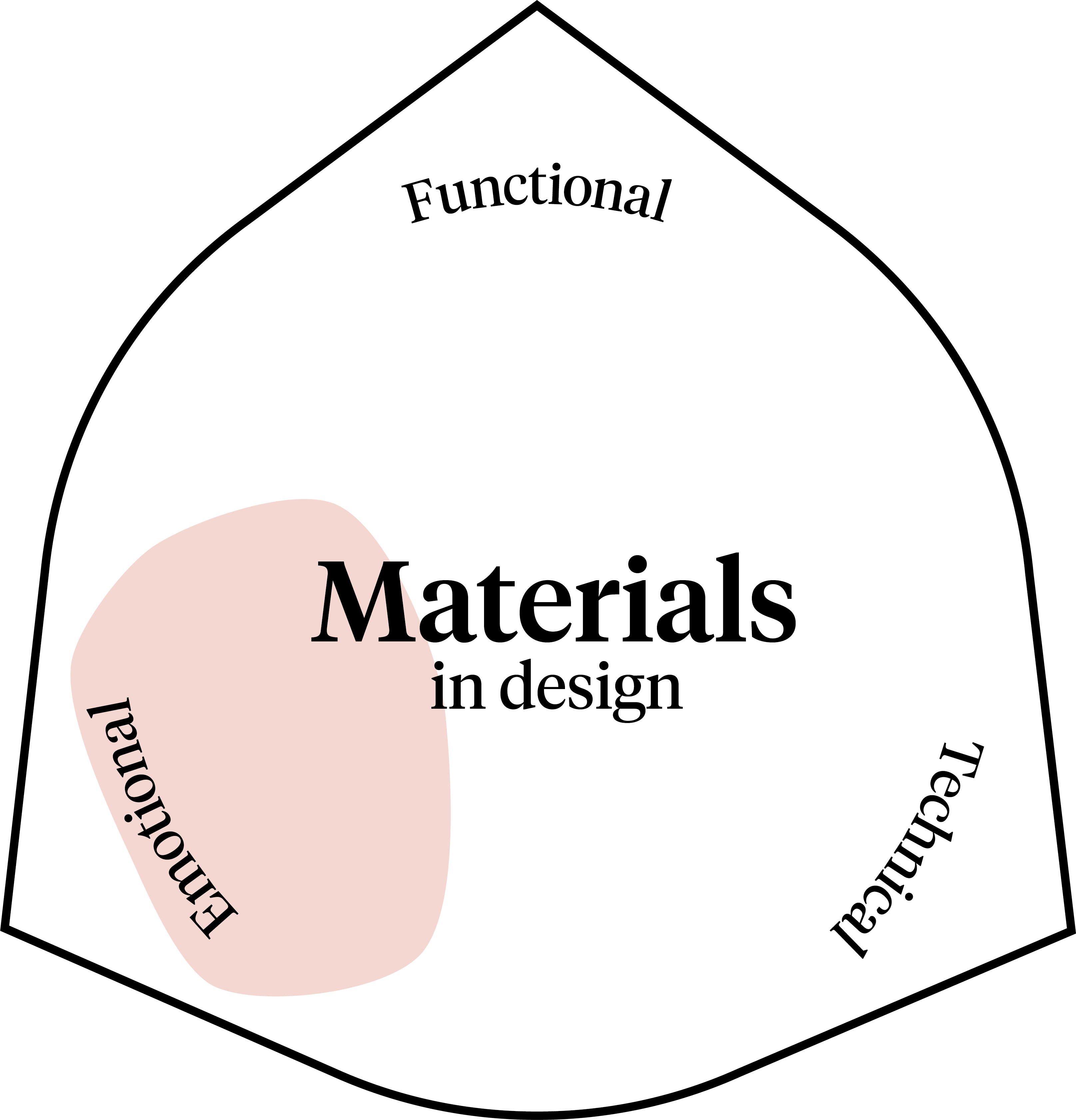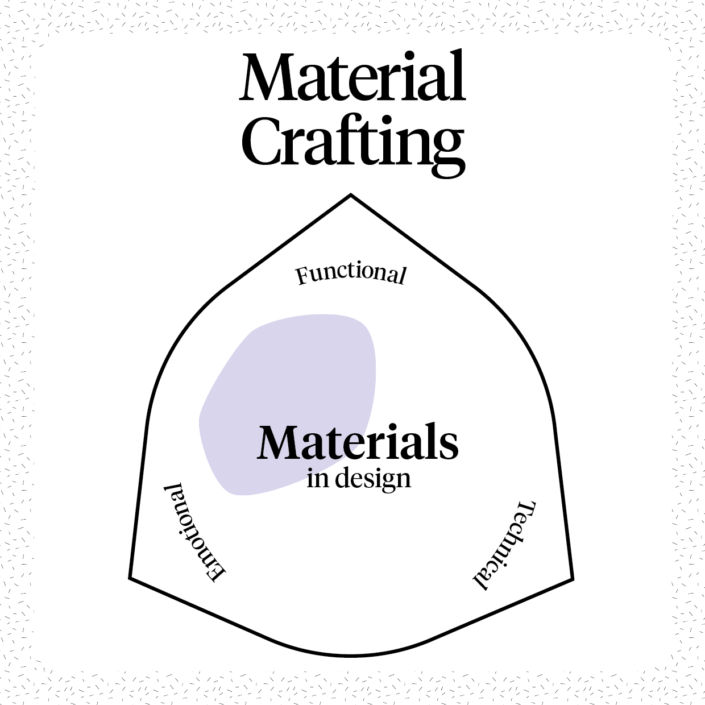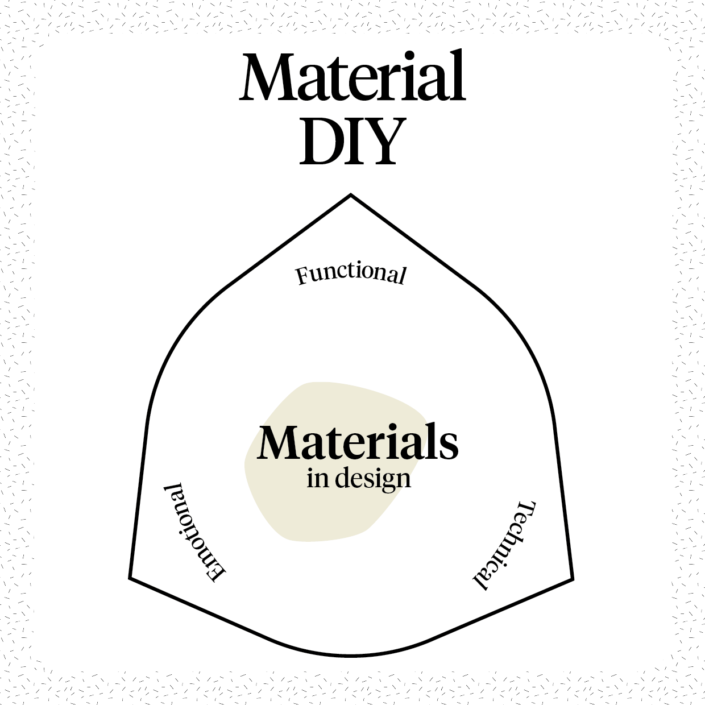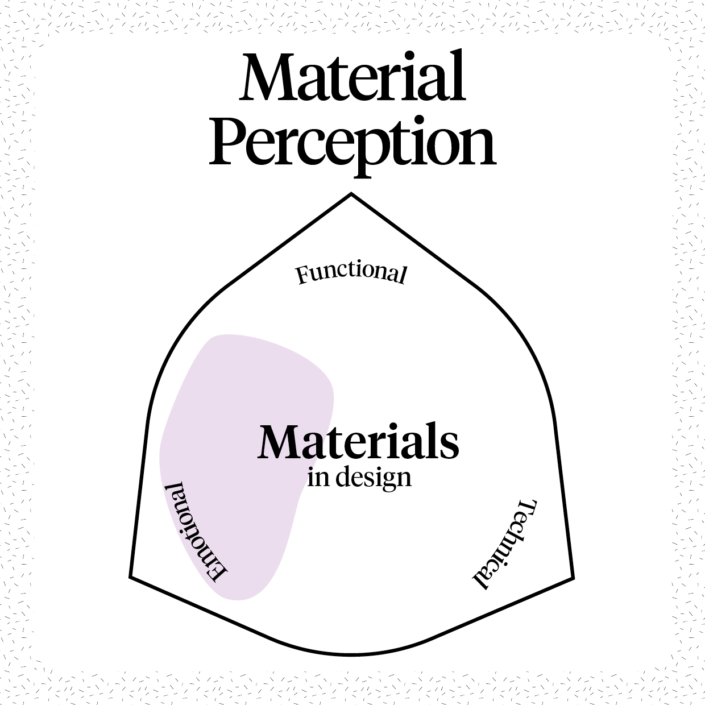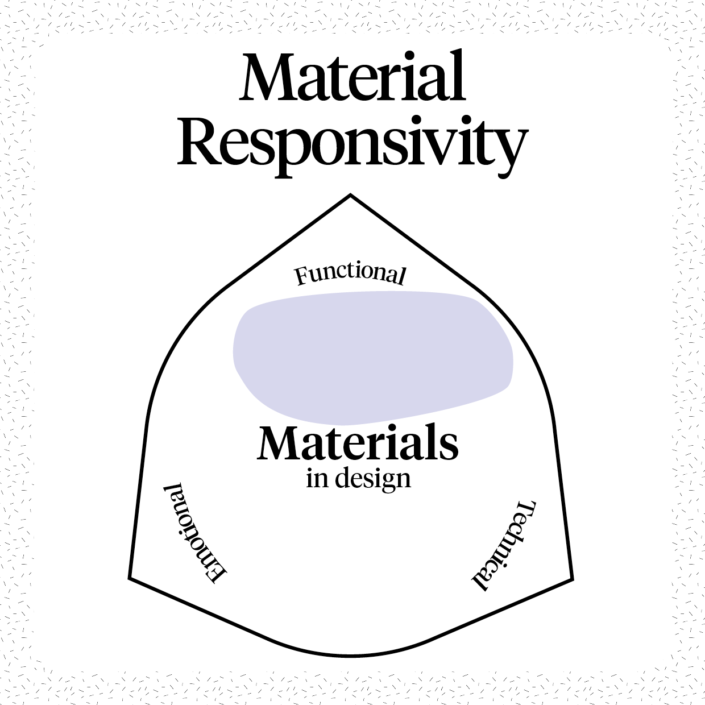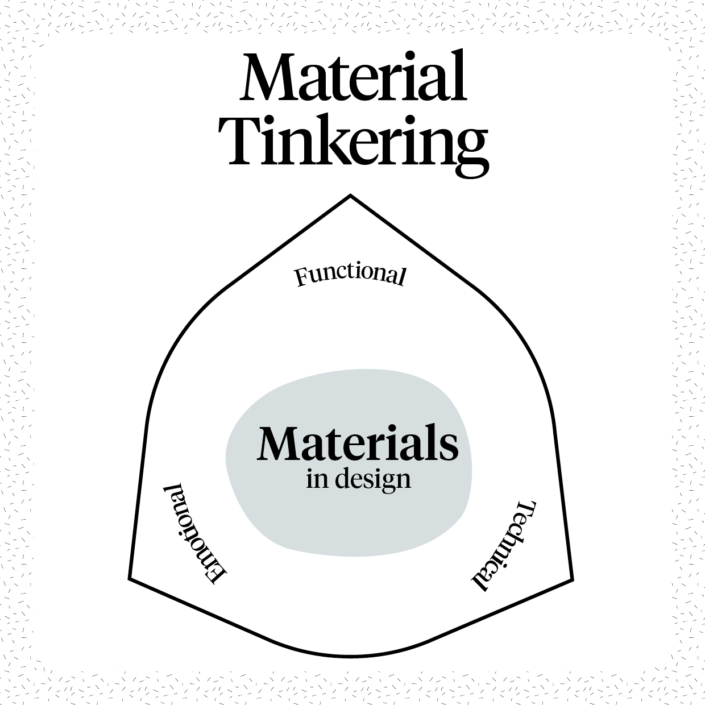What?
Material sensing is about activating and evoking sensory perceptions and emotions in users through material experiences and thus link physical interactions with materials to deeper reflections on material affections.
Why?
As material sensing links to our understanding of the world, it can help build meanings and bonds with materials and objects.
Challenges
- Material sensing and meaning creation is subjective and is anchored in both the individual and the culture. Thus, experiential aspects of materials are difficult to generalise and are therefore time consuming to become attuned to.
- There is a lack of general guidelines and tools to combine material experience with more objective aspects of material selection and development.
Examples
- Studio Omer Polak’s audio-olfactory installation, Olfactory Forest, poses questions about what a near-total deforestation could cause.
- The repertory grid by Anne Louise Bang aims to facilitate dialogues about the emotional value of textiles.
- In the Softie Wanted project by Victoria Ledig and Mandy Roos, material experience is in main focus. Through material responsiveness and tactility, users are invited to interact with the design.
Further Reading
Crippa, Rognoli & Levi (2012). Materials and Emotions: A Study on the Relations Between Materials and Emotions in Industrial Products, Proceedings of 8th International Design and Emotion Conference, London UK
Karana, Pedgley & Rognoli (2014). Materials Experience: Fundamentals of Materials and Design. Butterworth-Heinemann.
Zuo et al (2016). Sensory Perception of Material Texture in Consumer Products. Design Journal 19 (3), pp. 405–27.

